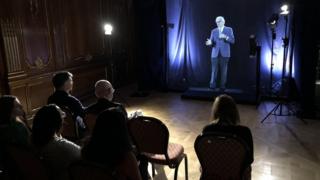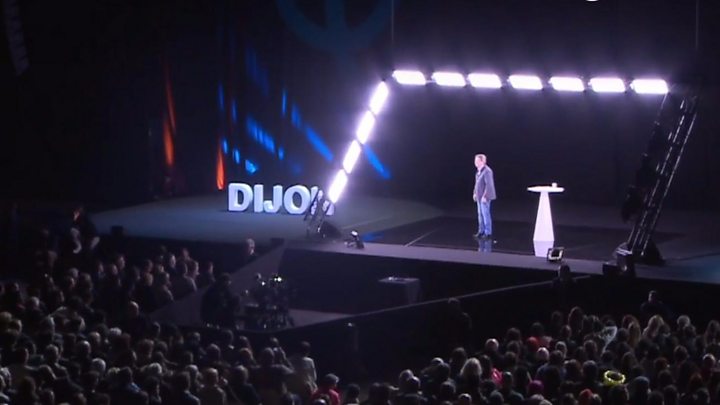‘Hologram’ lecturers to teach students at Imperial College London
 Image copyright
Image copyright
Imperial College London
University classes are set to be given a futuristic spin by letting lecturers appear as hologram-like apparitions beamed in from afar.
Imperial College London will show off the technology at a special event later on Thursday before deploying it more widely.
It believes it will be the first academic body to do so regularly.
A similar effect has been used to animate images of Michael Jackson, Elvis Presley and other celebrities.
Imperial will initially limit its use to its Business School’s activities but expects the technology could eventually become common.
“The alternative is to use video-conferencing software but we believe these holograms have a much greater sense of presence,” Dr David Lefevre, director of Imperial’s Edtech Lab, told the BBC.
Image copyright
Imperial College
The technology will be used to beam in speakers from New York and Los Angeles
“The lecturers have a high-definition monitor in front of them which is calibrated so they can point at people and look them in the eye. They can really interact.”
More than one person can also appear at a time.
Indeed, at the Women in Tech event on Thursday, a panel will feature two guests whose images will be transmitted from the US alongside a further two actually on stage. All four are expected to be able to intercommunicate.
On budget
Strictly speaking, the illusions are not holograms but neither are they the Pepper’s Ghost effect used by politicians including French presidential candidate Jean-Luc Melenchon and India’s Prime Minister Narendra Modi as well the entertainment industry.

Media playback is unsupported on your device
Instead, they use a technique developed by a Canadian company, Arht Media.
“The problem with Pepper’s Ghost is that it can be intricate to set up and can cost about £150,000 to run an event,” said Dr Lefevre.
“This is simpler – you project upon a glass screen, and a backdrop behind it uses software to give it an illusion of depth.
“It runs at the low thousands each time, so for the first time universities can afford it.”
To send their image, lecturers need to use a “capture studio”, which involves filming them against a black backdrop while being lit from both sides.
Imperial plans to make use of two external studios – one in Los Angeles, the other Toronto – as well a portable kit to invite overseas-based guest speakers to give talks to its students.
Image copyright
Arht Media
Imperial can deploy a portable studio to invite speakers from across the world
In addition, it intends to use the equipment to let one of its lecturers give a presentation to a Spanish business school in February.
Beyond providing a less disruptive means of attracting foreign talent than flying them in, Imperial says there are other advantages.
A popular invitee can be beamed to several lecture halls simultaneously.
Talks can also be recorded and played back for later use, although this would rule out interactions with the audience.
The downside is there is less likelihood guests will stay around for a chat once their scheduled appearance ends. Plus there is always the risk of a technical hitch.
But Imperial believes the benefits should outweigh the drawbacks.
“It’s going to be one of those technologies that gets used,” Dr Lefevre said.
“So long as the technology works the way we believe it will, I can see this becoming fairly mainstream.”


